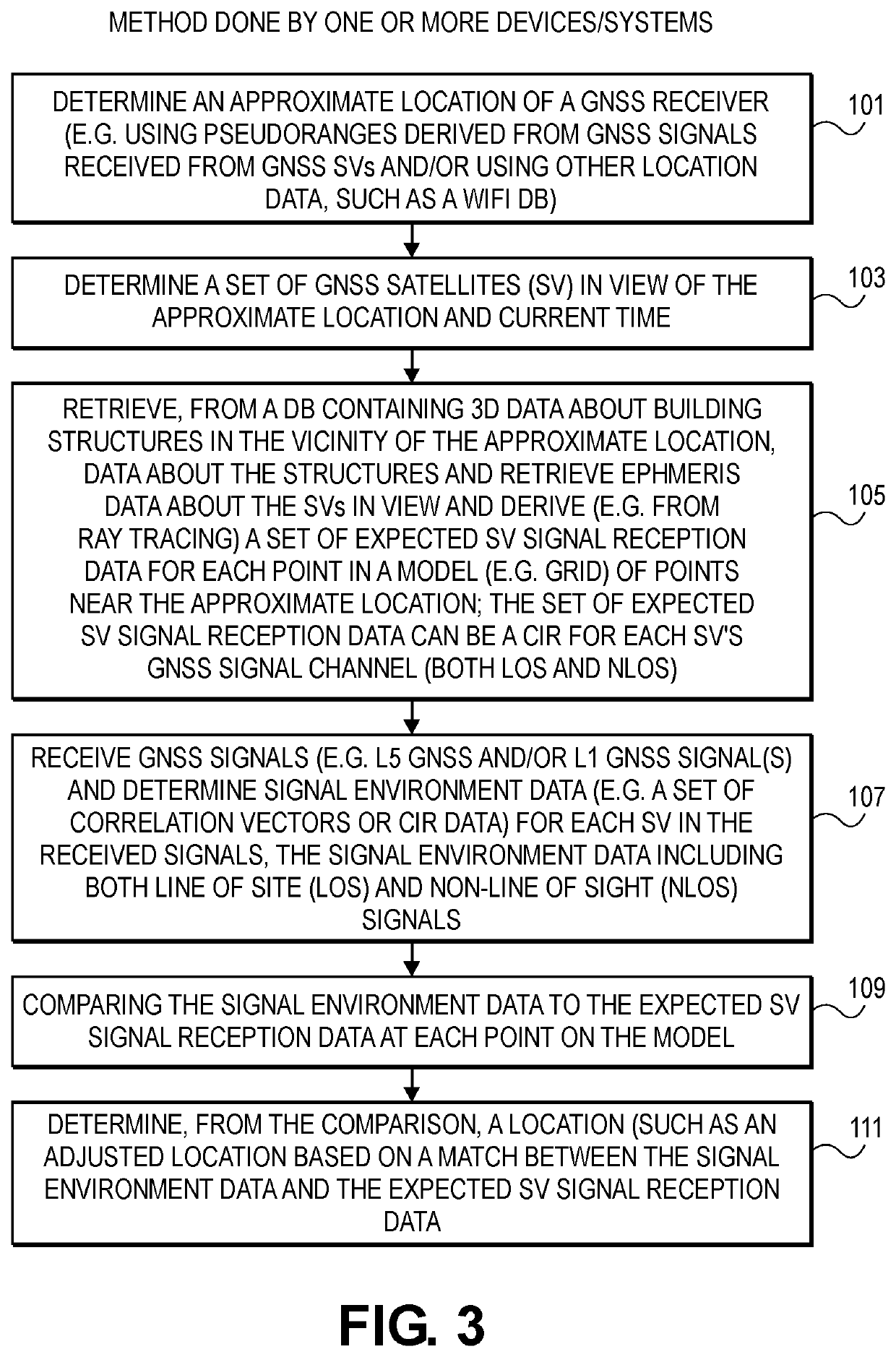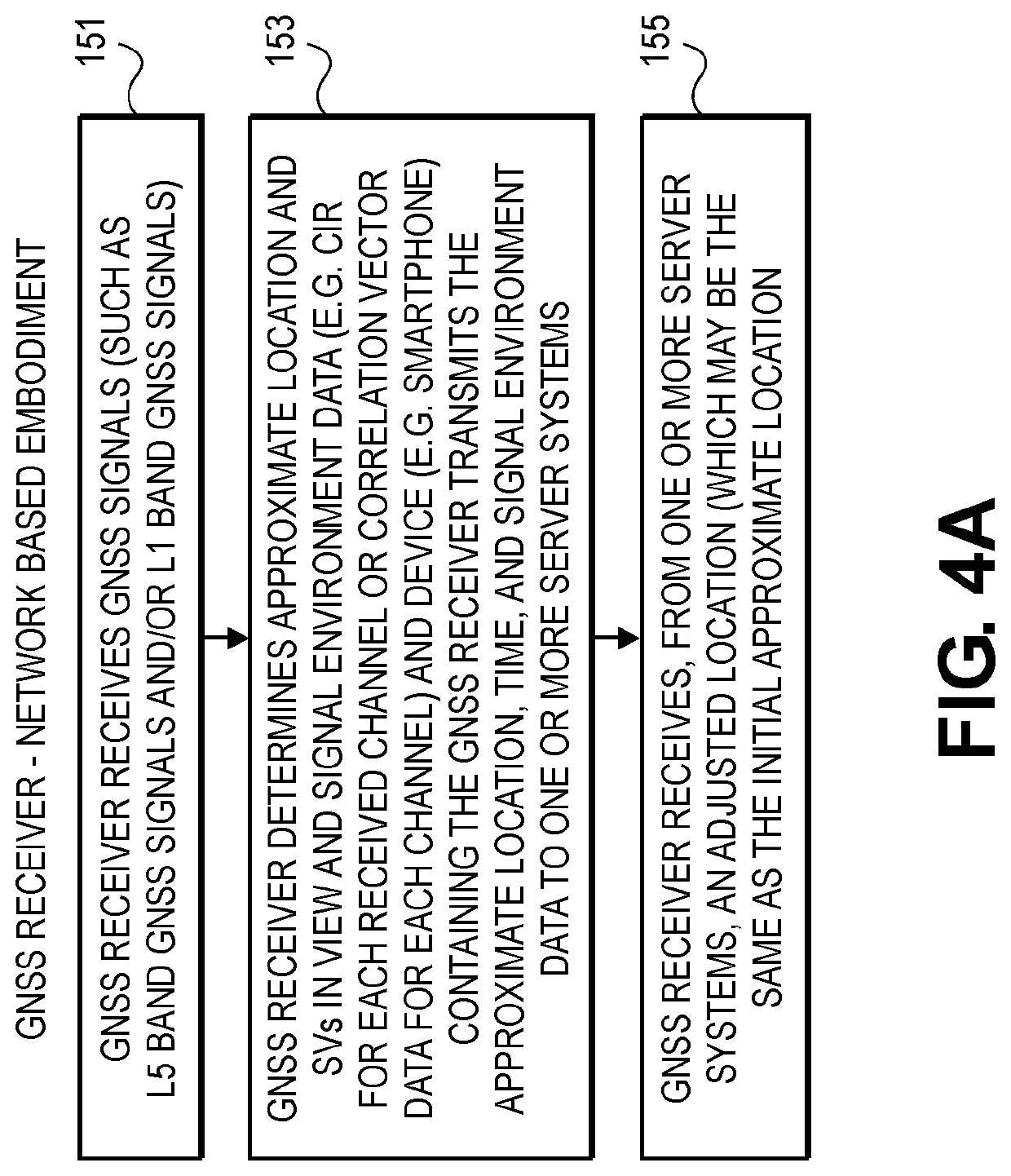Matching for GNSS signals
a technology of gnss signals and matching signals, applied in the field of navigation systems, can solve the problems of inaccurate position location of gnss receivers and urban canyons, and achieve the effects of less attenuation, improved pattern matching operations, and reduced polarization based distortion
- Summary
- Abstract
- Description
- Claims
- Application Information
AI Technical Summary
Benefits of technology
Problems solved by technology
Method used
Image
Examples
embodiment 1
[0069] A method for processing GNSS signals, the method comprising:
[0070]determining an approximate location of a GNSS receiver;
[0071]determining a set of GNSS satellites (SV) in view of the approximate location;
[0072]receiving or generating, based on three dimensional (3D) data about structures in the vicinity of the approximate location, a set of data describing expected SV signal reception data for the SVs in view, the set of data including, for each point in a model of points near the approximate location, the expected SV signal reception data for each SV in view at each point in the model, the expected SV signals including both line of sight and non-line of sight signals from each SV in the set of SVs in view;
[0073]receiving, at the GNSS receiver, GNSS signals in at least one of the L5 band (“GNSS L5 signals”) and the L1 band and determining signal environment data for the received GNSS L5 signals or GNSS signals in the L1 band, the signal environment data including data for bo...
embodiment 2
[0076] The method as in claim 1 wherein the comparing comprises a pattern matching between the expected SV signal reception data at each point in the model of points and the determined signal environment data.
embodiment 3
[0077] The method as in claim 2 wherein the method further comprises:
[0078]storing, in one or more storage systems in a network, the three dimensional (3D) data in association with location data, the three dimensional data describing structures in the vicinity of the determined approximate location;
[0079]determining, in one or more server systems in the network, the set of data describing expected SV signal reception data based on the determined 3D data using ray tracing between the set of GNSS SVs in view and the model of points near the approximate location;
[0080]transmitting, from the network to a device near the approximate location, the set of data describing expected SV signal reception data based on the determined 3D data; and wherein the device performs the method of claim 1.
PUM
 Login to View More
Login to View More Abstract
Description
Claims
Application Information
 Login to View More
Login to View More - R&D
- Intellectual Property
- Life Sciences
- Materials
- Tech Scout
- Unparalleled Data Quality
- Higher Quality Content
- 60% Fewer Hallucinations
Browse by: Latest US Patents, China's latest patents, Technical Efficacy Thesaurus, Application Domain, Technology Topic, Popular Technical Reports.
© 2025 PatSnap. All rights reserved.Legal|Privacy policy|Modern Slavery Act Transparency Statement|Sitemap|About US| Contact US: help@patsnap.com



